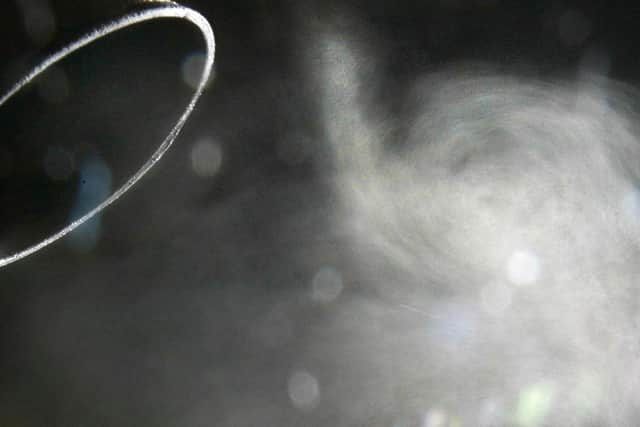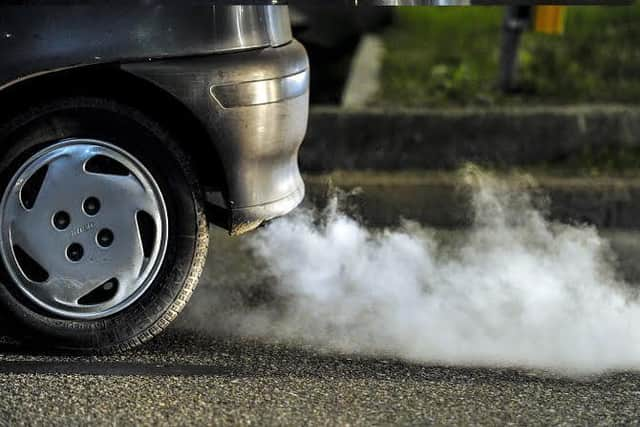Dozens of schools across Yorkshire are in areas of 'dangerous pollution'
Critics have blamed traffic fumes as the major source of the pollutant PM2.5 - the most harmful type of air pollution for human health and particularly affects children and people with lung conditions such as asthma.
The British Lung Foundation (BLF) is calling for stricter laws and a new cross-government air quality minister to protect the public from the effects of toxic air.
Advertisement
Hide AdAdvertisement
Hide AdMore than 8,500 nurseries, schools and colleges were identified as being in areas where the World Health Organisation (WHO) recommended limits were breached nationally, the figures obtained by JPIMedia Investigations show.
The WHO says concentrations of PM2.5 should not exceed 10 micrograms per cubic metre on average in the year – half the current legal limit in the UK of 20 micrograms.
Across Yorkshire and the Humber, 54 nurseries, schools and colleges were identified as being in areas where WHO-recommended limits were breached.
The highest number in the region were found in Hull, with 25 nurseries, schools and colleges recorded in areas where levels of fine particulate matter (PM2.5) are above the WHO recommended limit.
Advertisement
Hide AdAdvertisement
Hide AdPM2.5 can penetrate deep into the lungs and even the blood, increase heart diseases and lung cancer, and leads to thousands of early deaths a year.


Traffic fumes are a major source of the pollutant, which can also be produced through industrial emissions and wood burners.
David White, an air quality officer at Hull City Council, said: "Hull City Council fully supports measures to protect health by reducing emissions and improving air quality, and monitors levels at around 150 sites for nitrogen dioxide which is the main pollutant produced by road traffic, as well as at additional sites for other pollutants around the city."
Mr White added a key aspect of Hull City Council’s air quality strategy is to "encourage engagement with all members of the community".
Advertisement
Hide AdAdvertisement
Hide AdHe said: "And we welcome any interested parties to contact us."


Leeds, recorded the second highest in the region with 20 nurseries, schools and colleges identified.
A spokeswoman for Leeds City Council said: "Leeds City Council takes the health impacts of poor air quality seriously and we recognise that there are no truly ‘safe’ levels of air pollution.
"We are working closely with schools to reduce air pollution outside their gates. This includes programmes to encourage the use of sustainable travel among pupils, parents and staff and raising awareness of the harmful effects of idling vehicles."
Advertisement
Hide AdAdvertisement
Hide AdThe spokeswoman added a new air quality report will be published this spring that sets out a 10 year strategy for Leeds which will include plans to introduce stricter targets for local air quality that will meet WHO guidelines.


While in North Lincolnshire three nurseries, schools and colleges were recorded, and both North Lincolnshire and Bradford saw two identified.
Elsewhere one was identified in both Calderdale and Wakefield.
The BLF is urging the Government to produce a national health protection plan for England to be overseen by a new air quality minister, and stronger air quality laws in line with the WHO limits.
Advertisement
Hide AdAdvertisement
Hide AdProfessor Stephen Holgate, medical adviser at the BLF, said: “We’ve known about the deadly harm air pollution can cause for decades, it’s time now for urgent action.”
Last year, Prof Holgate gave expert testimony at the high-profile inquest of nine-year-old Ella Kissi-Debrah, in which the coroner concluded that air pollution had contributed to her death from asthma.
Prof Holgate, a leading expert on the impact that air pollution has on human health, produced a report for Ella’s family which linked her death to illegal levels of air pollution in the area where she lived, 25 metres from the South Circular, one of London’s busiest roads.
Ella’s mother, Rosamund, has since co-founded the Ella Roberta Foundation and has dedicated the last seven years to campaigning against illegal levels of air pollution while also fighting to secure a fresh inquest to reassess the reasons behind Ella’s death.
Advertisement
Hide AdAdvertisement
Hide AdFollowing seven years of hard work and an eleven-day gruelling inquest, on 16 December 2020, the coroner said in a statement that nitrogen dioxide and particulate matter levels near her home in the London borough of Lewisham were in excess of WHO guidelines, and were mainly caused by traffic emissions.
Prof Holgate added: “We must honour Ella’s legacy by acting now and protecting other vulnerable people from the harmful effects of toxic air.”
Environment minister Rebecca Pow said: "Air pollution has reduced significantly since 2010 with emissions of fine particulate matter falling by nine per cent and emissions of nitrogen oxides at their lowest level since records began. However, we know there is more to do.
"Our landmark Environment Bill will set at least two ambitious legally-binding air quality targets, with a primary focus on reducing exposure to particulate matter pollution.
Advertisement
Hide AdAdvertisement
Hide Ad"As part of this, we will consider the World Health Organization’s guidelines for PM2.5."
______________
Support The Yorkshire Post and become a subscriber today.
Your subscription will help us to continue to bring quality news to the people of Yorkshire. In return, you'll see fewer ads on site, get free access to our app and receive exclusive members-only offers. Click here to subscribe.
Comment Guidelines
National World encourages reader discussion on our stories. User feedback, insights and back-and-forth exchanges add a rich layer of context to reporting. Please review our Community Guidelines before commenting.